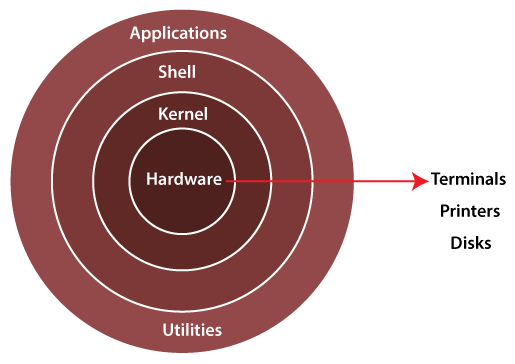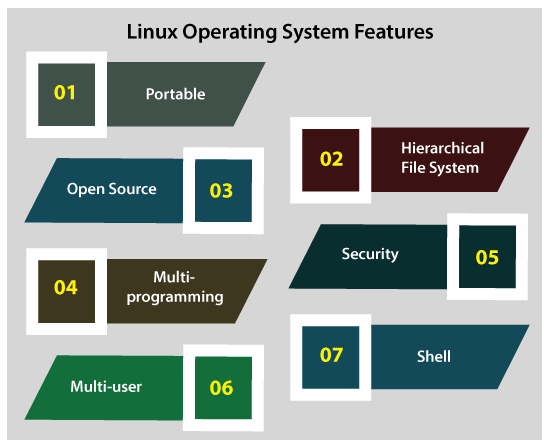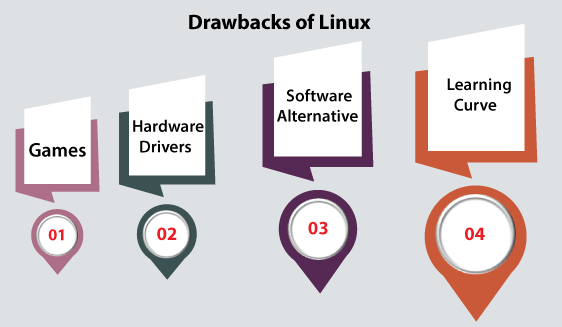Architecture of LinuxLet's first start with the basic knowledge of the Linux operating system. Linux operating systemAn operating system can be described as an interface among the computer hardware and the user of any computer. It is a group of software that handles the resources of the computer hardware and facilitates basic services for computer programs. An operating system is an essential component of system software within a computer system. The primary aim of an operating system is to provide a platform where a user can run any program conveniently or efficiently. On the other hand, Linux OS is one of the famous versions of the UNIX OS. It is developed to provide a low-cost or free OS for several personal computer system users. Remarkably, it is a complete OS Including an X Window System, Emacs editor, IP/TCP, GUI (graphical user interface), etc. Linux operating system historyIn 1991, the Linux history started with the starting of a particular project by the Finland student Linus Torvalds for creating a new free OS kernel. The final Linux Kernel was remarked by continuous development throughout the history since then.
Architecture of Linux system
The Linux operating system's architecture mainly contains some of the components: the Kernel, System Library, Hardware layer, System, and Shell utility. 1. Kernel:- The kernel is one of the core section of an operating system. It is responsible for each of the major actions of the Linux OS. This operating system contains distinct types of modules and cooperates with underlying hardware directly. The kernel facilitates required abstraction for hiding details of low-level hardware or application programs to the system. There are some of the important kernel types which are mentioned below:
2. System Libraries:- These libraries can be specified as some special functions. These are applied for implementing the operating system's functionality and don't need code access rights of the modules of kernel. 3. System Utility Programs:- It is responsible for doing specialized level and individual activities. 4. Hardware layer:- Linux operating system contains a hardware layer that consists of several peripheral devices like CPU, HDD, and RAM. 5. Shell:- It is an interface among the kernel and user. It can afford the services of kernel. It can take commands through the user and runs the functions of the kernel. The shell is available in distinct types of OSes. These operating systems are categorized into two different types, which are the graphical shells and command-line shells. The graphical line shells facilitate the graphical user interface, while the command line shells facilitate the command line interface. Thus, both of these shells implement operations. However, the graphical user interface shells work slower as compared to the command-line interface shells. There are a few types of these shells which are categorized as follows:
Linux Operating System FeaturesSome of the primary features of Linux OS are as follows: 
Drawbacks of Linux
Linux Operating System ApplicationsLinux is a billion-dollar corporation nowadays. Thousands of governments and companies are using Linux operating system across the world because of lower money, time, licensing fee, and affordability. Linux can be used within several types of electronic devices. These electronic devices are easily available for users worldwide. A few of the famous Linux-based electronic devices are listed below:
Linux DistributionIt is an OS that is composed of a software-based collection on Linux kernel or we can say the distribution includes the Linux Kernel. It is supporting software and libraries. We can obtain Linux-based OS by downloading any Linux distribution. These types of distributions exists for distinct types of devices such as personal computers, embedded devices, etc. Around more than 600 Linux distributions are existed and a few of the famous Linux distributions are listed as follows:
Are Ubuntu and Linux Differ?YES. The primary difference between window and Linux is that window is open source and free OS and its Linux distribution based on Debian, Whereas Linux is a large collection of open-source OSes that are working based on Linux kernel. Besides, Ubuntu is a distribution of Linux and Linux is a core system. Ubuntu is integrated by Canonical Ltd. and published in 2004 and Linux is integrated by Linus Torvalds and published in 1991. User mode vs Kernel modeThe code of kernel component runs in a unique privilege mood known as kernel mode along with complete access to every computer resource. This code illustrates an individual process, runs in an individual address space, and don't need the context switch. Hence, it is very fast and efficient. Kernel executes all the processes and facilitates various services of a system to the processes. Also, it facilitates secured access to processes to hardware. The support code that is not needed to execute in kernel mode is inside the system library. The user programs and other types of system programs are implemented in the user mode. It includes no access to kernel mode and system hardware. User utilities/programs use the system libraries for accessing kernel functions to obtain low-level tasks of the system.
Next TopicLinux Lite
|
 For Videos Join Our Youtube Channel: Join Now
For Videos Join Our Youtube Channel: Join Now
Feedback
- Send your Feedback to [email protected]
Help Others, Please Share










